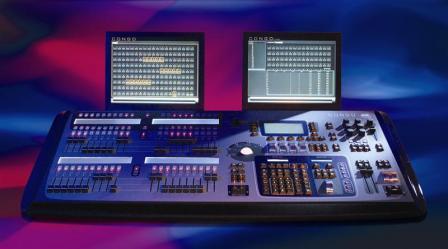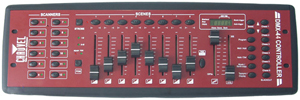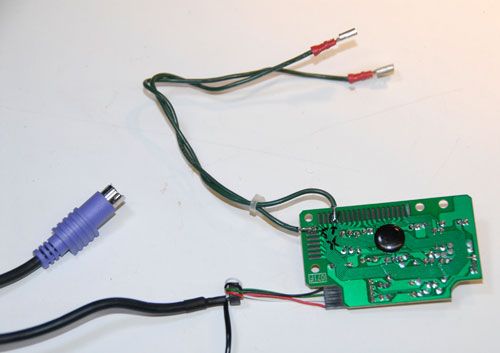DMX512 Tutorial – Part 2
Show ControlWelcome to part 2 of my DMX512 tutorial. Last time I talked about some of the basics of the protocol and how to implement it. In this installment we’ll dig a little deeper.

Welcome to part 2 of my DMX512 tutorial. Last time I talked about some of the basics of the protocol and how to implement it. In this installment we’ll dig a little deeper.

DMX512 is a control protocol that is used by most lighting gear these days. The basic idea behind it is to allow you control a whole bunch of things by only hooking up a few wires. Let’s say you have a light board and 12 dimmers. Instead of having to run a separate wire to each dimmer, the commands for each dimmer are sliced up and fed down 3 wires one after the other. The dimmers receive the commands, locate the ones that are addressed to them and turn on or off accordingly.

A hacked-up keyboard is a cheap and fairly simple way to add a switch-type input to a PC. Why would you want to do this? Let’s say you are building a haunted house. With just your hacked keyboard and Winamp you have all kinds of things you can do:
The artistic part is up to you; the point is to make the computer do something when something happens in the real world. Read on to find out how.

Charlie Richmond of Richmond Sound Design fame has on his site a PDF detailing the retrofit of the show control system for the Waterworld show at Universal Studios Hollywood he did in 2007. The old system was run by an Amiga and used MSC for just about everything. They ended up having to replace and test the entire system in about 2.5 days.
Unlike most “behind the scenes” stuff, this PDF has a bunch of pictures of the old and new system as well as descriptions of how things work. It also contains the crazy timeline they had to work with for the retrofit.
